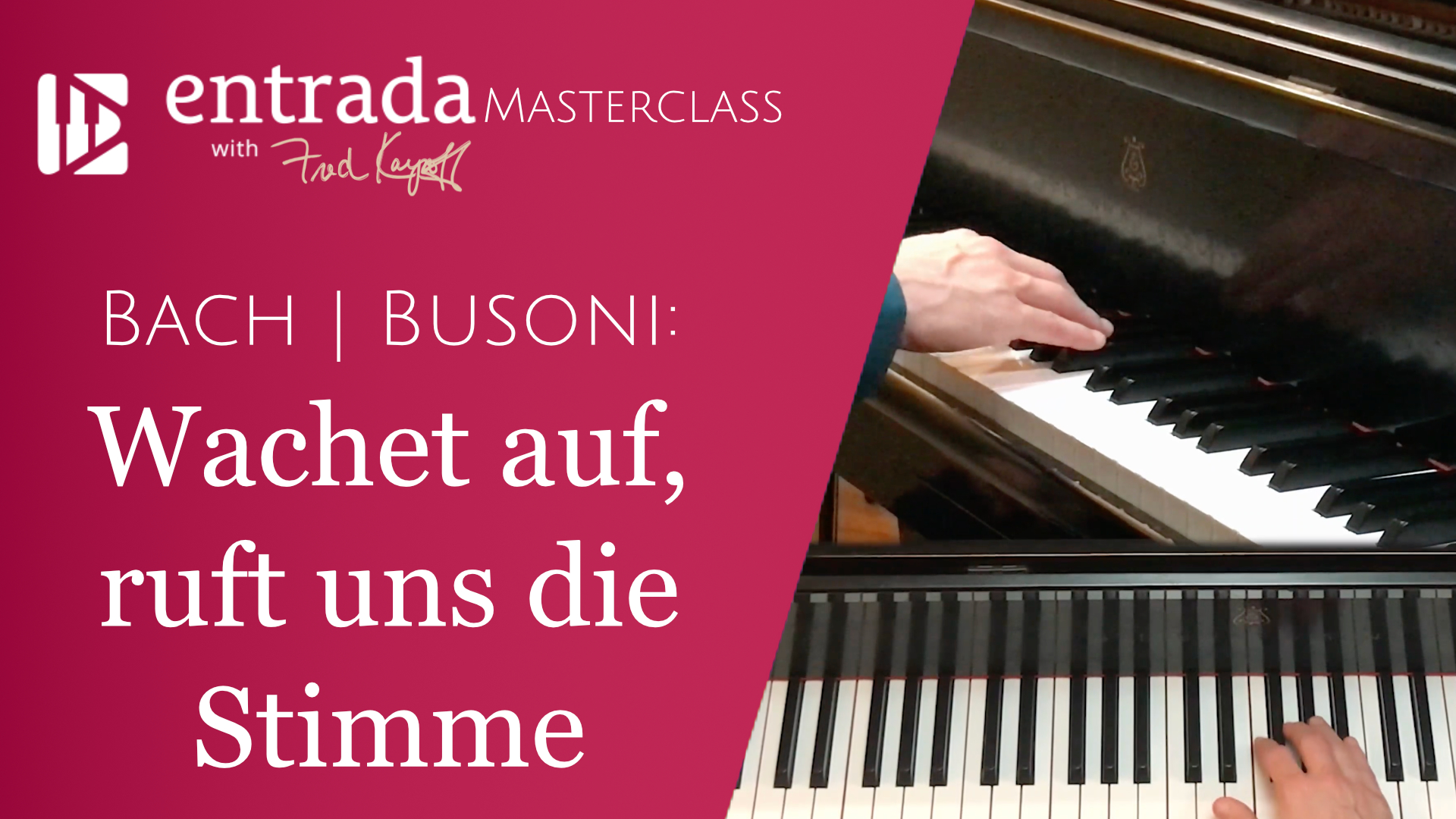
January 6, 2022
Masterclass: Bach/Busoni: Wachet Auf
All postsAccess the full Masterclass, and many more, inside Entrada. Try Entrada Free for 14 days!
When I was seven, I loved going into our family living room to pull down a volume of the World Book encyclopedia and discover pictures and words that ignited my imagination. This room was a kind of sanctuary: it featured no television and an off-brand baby grand that I was soon to discover–but not yet. First, music became alive through our family’s RCA console, after I learned how to play LPs on the turntable.
My older siblings’ albums fascinated me. The Beatles’ inventiveness sparked a wide range of feelings, and anguished songs by Crosby, Stills, Nash and Young awakened a sense of justice and the senselessness of war. But a different kind of magic happened when I discovered two large box sets of the nine Beethoven Symphonies and Organ Memories.
The last track of the organ set was “Sleepers Wake.” Something about its majesty resonated deeply within me even at that early age. I dropped the needle repeatedly to hear that track again and again. Although I didn’t know how to describe it then, its counterpoint swept me away with its elegant combination of complexity and simplicity.
It was much later that I heard the work again and discovered that “Sleepers Wake” was J.S. Bach’s organ setting of a chorale from his Cantata No. 140, Wachet auf, ruft uns die Stimme. Later still, I happened upon Ferruccio Busoni’s arrangements of fifteen of Bach’s chorale preludes and was thrilled to encounter a ready-made version of “Sleepers Wake” that I could play on the piano.
It’s been many years since I sat in front of the RCA listening to those precious recordings, but my attraction to this music is just as strong as it was when I was a child. It inspires my new tutorial on Wachet auf in the Entrada Masterclass library.
Some of the topics we explore are 2- and 3-note slurs, discreet pedaling, the “center of the phrase,” sensing internal subdivisions to phrase with proportion, options for smaller hands, executing ornaments with great coordination, projecting lyrical counterpoint and–one of my most persistent themes–“the secret of rhythmic playing.”
As usual, we’re including my marked score of the work. Much of this piece can be managed by intermediate pianists, but we’re categorizing it as early advanced at Entrada because of the sophistication of the counterpoint, voicing, ornaments, and occasional acrobatic technical spots.
I hope you enjoy working on this timeless piece.

Access the full Masterclass, and many more, inside Entrada!




Leave a Reply